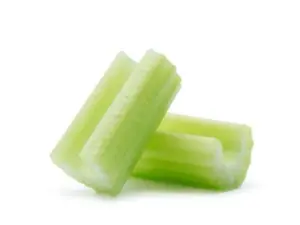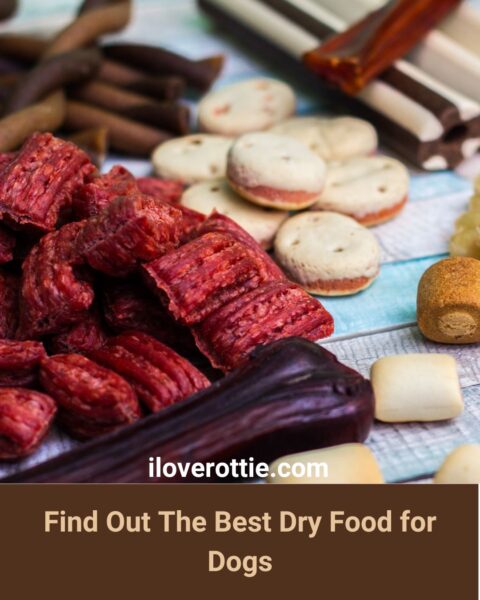Disclaimer: please check with your dog’s personal veterinarian before introducing any human foods into your dog’s diet. Whilst most dogs can safely eat celery, this vegetable may not be suitable for certain dogs, particularly those with certain health conditions, those on medications, and those on a prescription pet food diet.
When it comes to providing a balanced and nutritious diet for our canine companions, incorporating fresh vegetables can be a great way to enhance their meals. Celery, in particular, is often a popular choice among dog owners. But can dogs eat celery raw? The answer is yes.
However, there are a few precautions to keep in mind when preparing this vegetable for your dog. In this article, we discuss the benefits and risks of feeding dogs celery.
You can also read the article on can dogs eat popcorn.
Click here to read about can dogs have tomatoes.
Can Dogs Eat Celery Raw?
Yes, celery is generally considered to be a safe and healthy food for dogs. In fact, fresh vegetables in general are a great addition to your furry friend’s meal plans! Both raw and cooked celery can be fed in moderation as a wholesome addition to your dog’s diet, with raw celery providing maximal health benefits.
How to Prepare Celery for Dogs?
If you’ve decided you’d like to feed celery to your pet, your next question most dog owners have is probably “how?”
For starters, you should ideally choose organic if you plan on feeding your dog celery, to reduce the risk of pesticide ingestion; it goes without saying that pesticides can be toxic to dogs. Always rinse celery thoroughly in clean, cool water, before continuing to prepare this veggie for your furry friend. Most pesticide contamination will be focused around the celery leaves, so (unless you have purchased organic celery) the leaves are best removed and discarded before feeding your dog celery.
Feeding Your Dog Celery – Raw
Feed your dog celery raw for maximum health benefits and teeth cleaning capabilities. Cooked celery will be less effective due to its softer texture.
Chop raw celery into bite sized pieces and feed the chopped celery to your dog as a standalone snack, or as a topper on your dog’s usual meal. As a special treat with an added boost of healthy fats, you can also offer your dog a few bite sized pieces of celery spread with a scant amount of peanut butter. Just be sure to check the peanut butter contains only peanuts and natural oil, with no added sweaters and little or no added salt.
Feeding Your Dog Celery – Cooked
Dogs can eat celery cooked, too, so long as it’s prepared appropriately. The best way to prepared a celery dish for your dog is to cut it into bite sized pieces and cook in a steamer for 4-9 minutes, until soft. Steaming the celery will preserve as many nutrients as possible. You can also boil celery for your dog, however more nutrients will be lost this way.
Once cooked, wait for the celery to cool down to room temperature before feeding. Because cooked celery is quite bland, your dog may accept it best mixed in with their normal meal. Don’t add any “dinner table” or other seasonings (eg, salt or pepper) to the celery if you plan to feed it to your dog.
Is Celery Good for Dogs? Health Benefits of Celery for Dogs
Many pet parents will be curious as to the benefits of celery for their dog’s health.
Feeding celery to your dog provides a fantastic source of fiber and may help keep your dog’s bowel movements regular. What’s more, both you and your dog can likely benefit from the powerful antioxidants and natural anti-inflammatory properties that celery provides [1].
Like many other fresh veggies, celery is rich in vitamin C, as well as vitamins A, B9 (folate) and K (an important micronutrient that
is essential for proper blood clotting). Celery also provides magnesium, calcium, potassium, magnesium and iron. All of this, despite being incredibly low in calories, low sodium and offering a high water content – great for helping your dog stay well hydrated!
The highest concentration of “goodies” (including vitamin C, calcium and potassium) are found in celery’s leaves, although as mentioned it’s best to discard these unless feeding organic.
What’s more, whilst most human food is detrimental to doggy dental health, celery is different. In fact, feeding raw celery as an occasional treat may even help a little with keeping your dog’s teeth clean, since the chomping on this vegetable (with it’s crunchy texture) might help to mechanically disrupt plaque formation.
And as some dog owners will already know, feeding just a small amount of this refreshing snack can also freshen your dog’s breath instantly.
Overall, celery is a great addition for dogs fed an otherwise complete and balanced diet.
What are the Risks of Feeding Celery to My Dog?
Raw celery is a choking hazard, particularly for very small dogs, as is every other crunchy, hard foodstuff: including kibble, dental chews and other vegetables such as carrots.
You can minimise the risk of choking by feeding celery in bite sized chunks, rather than feeding celery sticks, if your dog is keen to crunch on this tasty, healthy snack.
Can Dogs Have Celery for Weight Loss?
Celery is well known as a low calorie and very low fat snack, with the average stick only providing around ten calories and a negligible amount of fat. As such, this veggie is often recommended as a weight-loss friendly treat for dogs who are carrying a few extra pounds. Given that an estimated 30-40% of dogs are overweight or obese [2], it’s worthwhile to consider the role of celery as a low calorie snack.
Of course, there’s a right way and a wrong way to get your dog to lose weight: crash diets and fad diets belong firmly in the “wrong way” category! Overweight dogs do require calorie restriction to achieve weight loss, but still require a normal, unrestricted daily amount of essential vitamins and minerals.
Commercially available weight loss diets (such as Hill’s Science Diet Perfect Weight or Purina Pro Plan Weight Management Food) are recommended to make up at least 90% of your dog’s weight loss diet, as these are formulated to provide calorie restriction, without cutting back on essential nutrients.
Feed these diets according to the manufacturer’s recommendations for your dog’s ideal weight, and be sure to monitor your dog’s weight every 2-4 weeks and adjust the amount you are feeding if required.
Healthy snacks such as celery and other veggies and low calorie dog treats should make up no more than 10% of your dog’s diet, and celery should never be used as a meal replacement for dogs.
How Much Celery Can I Give My Dog?
It’s certainly possible to feed too much celery to your dog; how much is too much depends on the size of your dog, as well as on their personal tolerance for this vegetable. As a general rule, no more than 10% of your dog’s diet should be made up of treats, including veggies, with the remaining 90% (or more) made up of a complete, balanced dog food.
Small dogs will obviously require smaller bite sized pieces compared to large dogs, and should be fed less celery overall compared to bigger breeds. Reduce or stop if your pet develops any signs of an upset stomach, for example, loose bowel movements. This might indicate that you are feeding too much celery to your dog.
Can Dogs Eat Celery? Yes They Can!
In conclusion, celery can be a nutritious and safe treat for your canine companion. Whether fed raw or cooked, celery offers a range of health benefits and can be a valuable addition to your dog’s diet.
While raw celery provides maximum health benefits and teeth-cleaning capabilities, cooked celery can also be offered if preferred. By incorporating celery into your dog’s diet in moderation, you can provide them with a tasty and wholesome treat that contributes to their overall well-being.
Reference List:
[1] Lau, H., Ni, N., Dayal, H., Lim, S-Y., Ren, Y. and Li, S.F-Y. Evaluation of Anti-Inflammatory Effects of Celery Leaf and Stem Extracts in LPS-Induced RAW 264.7 Cells Using Nitric Oxide Assay and LC-MS Based Metabolomics’, Current Issues in Molecular Biology. (2021)
[2] Loftus, J.P. and Wakshlag, J.J. Canine and feline obesity: a review of pathophysiology, epidemiology, and clinical management. Veterinary Medicine (Auckland). (2015)















